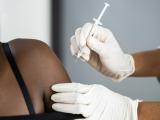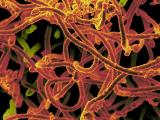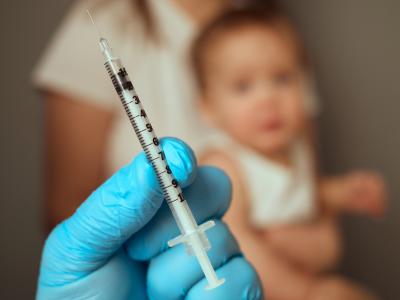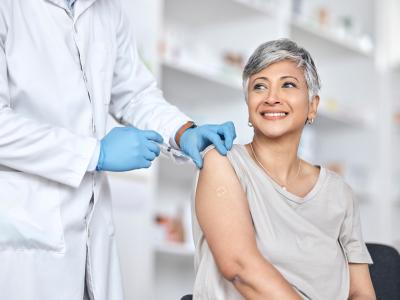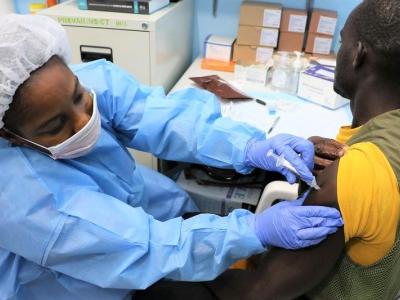Ebola cases in West Africa's outbreak region stayed in the single digits last week, with four cases reported, all from a known transmission chain in Guinea, the World Health Organization (WHO) said in its weekly update today.
In related developments, the WHO released a road map detailing its emergency response reforms that have taken shape in the epidemic's wake, and the US government announced more funding support for a rapid test for the disease.
Leaders from two of the affected nations addressed the United Nations (UN) General Assembly yesterday to share their recovery plans and to push for global health reforms. Sierra Leone President Ernest Bai Koroma commended the UN and the international community for their help with the outbreak, and he called for more African countries to be included on the UN Security Council, according to a UN News Centre report.
Liberian President Ellen Johnson Sirleaf welcomed reviews of the world's response to the crisis and also thanked the global community for its support during the outbreak and the country's recovery. "We bear witness to the foundational creed of the United Nations—that we can always find it within our humanity to respond even to unknown enemies to our collective progress."
Illnesses linked to sick traveler
All four of Guinea's cases involve people who got sick in Forecariah district and are registered contacts of a 10-year-old girl who traveled there from the Ratoma area of Conakry, the WHO said. Two of the newly confirmed patients are traditional healers—men ages 26 and 46—who reportedly treated the girl, who died from her infection. The other two patients are the wife of one of the healers and the girl's sister.
More than 450 contacts are still under monitoring in Guinea, all linked to the Ratoma transmission chain. Most are in Forecariah district. About 150 are in Conakry, and one is an individual who traveled to N'Zerekore district.
The WHO said an active case-finding push is under way in two Conakry neighborhoods that have links to the country's last known transmission chain and that infection control teams are also visiting health facilities in the same area to strengthen capacity.
Sierra Leone has gone a second week without any cases, though 700 contacts are still being monitored in Bombali district in connection to the last reported case there on Sep 13.
No new healthcare worker infections were reported, keeping the total at 881 Ebola infections, 513 of them fatal.
Overall, 28,388 confirmed, probable, and suspected cases have been reported since the outbreak began in the early months of 2014. The death toll is at 11,296.
Emergency-response reform
Yesterday the WHO released a road map spelling out the reforms that are under way after a host of missteps during the first several months of West Africa's Ebola outbreak. The reforms are based on measures passed by the World Health Assembly (WHA) in May after it received input of a special executive board session on Ebola that was held in January. Earlier in the outbreak, the WHO used the road map format to focus and spell out its response to the Ebola crisis.
The road map covers six main themes, which the WHO said are based on issues aired by Director-General Margaret Chan, MD, MPH, in her speech to the WHA in May, decisions passed by the WHA, and recommendations released in early July by the Ebola Interim Assessment Panel, an independent group chaired by Dame Barbara Stocking, a humanitarian response expert and president of Murray Edwards College at the University of Cambridge.
The six focus areas in the 9-page road map are:
- A unified WHO platform for outbreaks and emergencies that meshes health and humanitarian readiness at the country level and with partners and stakeholders
- A global health workforce from nations and UN agencies that can be deployed, along with surge capacity
- Prioritizing International Health Regulation (IHR) core capacity improvements to help countries better detect and respond to threats
- Improved IHR effectiveness
- A framework for research and development preparedness that enables the activities to take place during outbreaks and emergencies
- International financing for pandemics and other health emergencies, including the WHO contingency fund and a pandemic emergency financing facility proposed by the World Bank
For each of the six points, the WHO has detailed the lead WHO network and key partners and listed a sets deliverables, milestones, and timelines. For example, for the global health emergency workforce reform, a description of the scope and roles for each component is due by the end of 2015, and a mechanism is slated to be in place by the end of 2016. The WHO projects that the contingency fund will be 50% funded by the end of 2016, with a sustainable long-term mechanism in place by the end of 2016.
The WHO also identified two other reforms that go beyond its work in emergencies and outbreaks: a communications strategy that incorporates effective strategic and risk messaging and a community engagement strategy.
The WHO said David Nabarro, MD, the UN's special envoy on Ebola, has convened and chaired a high-level advisory group to guide the WHO's emergency reform process through the end of 2015. The WHO said Chan has appointed an internal project team to support the advisory group.
More HHS funds for rapid test
The US Department of Health and Human Services (HHS) has exercised an option that provides an additional $7.2 million to support the development of an Ebola rapid test made by OraSure Technologies, a diagnostic testing company based in Bethlehem, Pa.
The test is designed for use in the field, and the company said in a statement that it can provide a positive test from a finger-stick blood sample as early as 4 minutes and a negative result in 30 minutes. The company received an emergency use authorization for the test from the Food and Drug Administration (FDA) in July.
HHS's Office of the Assistant Secretary for Preparedness and Response (ASPR) announced its initial $1.8 million contract with the company in June. OraSure said the additional funding, provided via ASPR's Biomedical Advances Research Development Authority (BARDA), will cover clinical and regulatory steps leading up to a request for FDA clearance.
The company also announced yesterday that the Centers for Disease Control and Prevention (CDC) will buy about $1.5 million of its tests for field testing in West Africa. OraSure said the purchase is the CDC's second for field testing purposes.
See also:
Sep 30 WHO Ebola situation update
Sep 29 UN News Centre report
Sep WHO emergency response reform road map
Jul 7 CIDRAP News story "WHO independent panel calls out Ebola response flaws"
Sep 29 OraSure Technologies press release
Jun 12 CIDRAP News scan "HHS announced support for development of Ebola rapid test"





